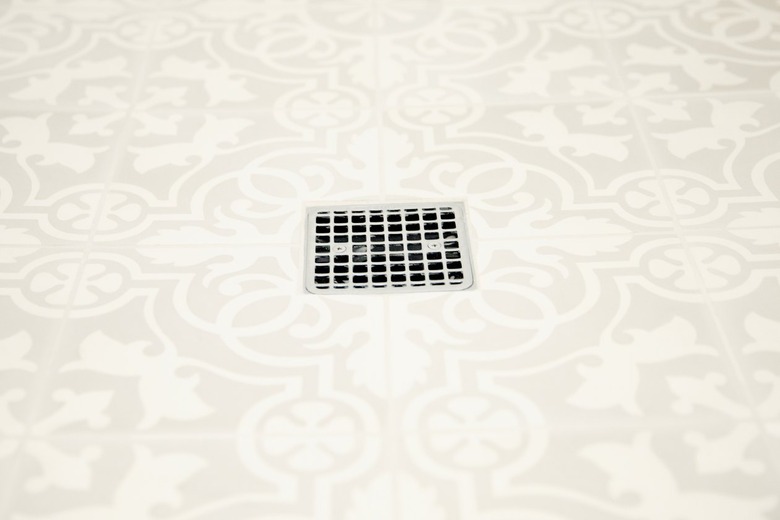The Difference Between A Shower Drain And Tub Drain
We may receive a commission on purchases made from links.
Although shower and tub drains serve the same function — to dispose of wastewater into your pipe drainage system — each one performs the task differently, and there are a few key differences between the two drains. Standalone shower tub drains and a tub or bathtub and shower combination drain cannot be used interchangeably. If you are remodeling your bathroom and the project involves replacing your standalone shower with a tub, consider hiring a plumber to install the tub. A plumber can ensure the plumbing outlets meet plumbing code.
Shower vs. Tub Drains
Shower vs. Tub Drains
A shower uses a floor drain, which directly eliminates wastewater from the shower instantaneously as you bathe. A tub drain, on the other hand, requires you to manually close and open it with a lift-and-turn mechanism or a lever. You push the mechanism down and turn it clockwise to close the drain when you want the tub to fill with water.
Once you have finished bathing, you lift the mechanism up and turn it counterclockwise to open the drain and allow the water to drain. A lever works pretty much the same way, except that you pull the lever up to close the drain and push it down to open. You can find shower drains at a variety of stores, including Amazon, Wayfair, and Home Depot.
Tip
Clearing shower drain smells in a stand-alone shower is slightly different than clearing them from a typical bath-shower combo. If you're cleaning out a stand-alone shower drain, be sure to remove extraneous objects before using typical methods (like a plunger or Zip-it tool) to remove a clog.
Pipe Connection Size Differences
Pipe Connection Size Differences
Shower and tub drains usually have different drain connection sizes to accommodate the various pipe sizes of your home's plumbing drain system. A shower tub drain generally has a 2-inch drain connection, while a tub drain frequently has a 1 1/2-inch drain connection. The drain connection for your tub is generally the same as the one for your sink, whereas the shower drain connection is slightly larger.
When making changes to your shower and tub drains, consider that the drainage pipe may be larger than the drains. For instance, your bathroom may have a 2-inch drain and 3-inch drainage pipe. Make sure you have all of the necessary supplies on hand if you intend on replacing drains.
Connection Differences Between Drains
Connection Differences Between Drains
Since a shower has a floor drain, wastewater empties directly into the plumbing drain system. It does not have to be piped from the shower outlet to the plumbing drain system, like a tub drain requires. With this in mind, you can think of your tub as a floor-level sink. A tub mandates that you install drain connections, similar to those found on your sink, for wastewater to empty into your home's plumbing drain system.
Ensure Installation Is to Code
Ensure Installation Is to Code
If you are in the process of converting your shower stall to a standalone tub or bathtub and shower combination, ensure the installation is to code. A shower drain should pipe directly to a shower outlet, and a tub drain should pipe directly to a tub outlet.
Without the correct drain pipe connections, wastewater can drain from the tub and accumulate underneath it until it finds its way to the floor drain and eventually to the drainage system, which can create a health hazard. When unsure, consult with a professional plumber.
